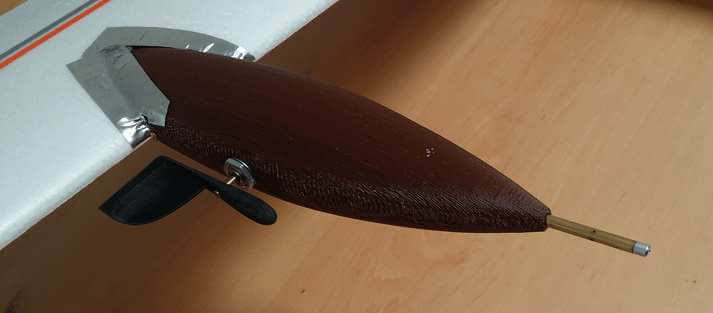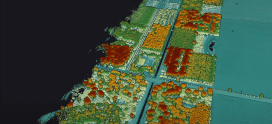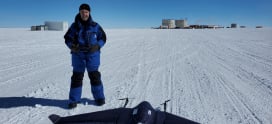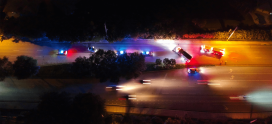
The problem with airspeed sensors
Airspeed sensors have been a major concern for both manned, and unmanned aviation alike. Yet almost every fixed wing or VTOL vehicle is dependent on it. So what is wrong with these sensors and why are they used?
How an airspeed sensor should work
A standard airspeed sensors consists of a pitot tube, a temperature sensor and 2 pressure sensors. The pitot tube has 2 ports (holes), one at the tip (like an injection needle) which is called the dynamic port, and one at the side which is called the static port. Each of these ports are connected to a pressure sensor. When the tube is pointing forward on a moving vehicle, it can measure the difference between the pressure from dynamic and static port. When factoring in the temperature it can estimate the current speed through air.
So whats the problem?
Over the years many problems have been identified with the use of airspeed sensors in both manned and unmanned vehicles. There is not one major problem so here is a list in random order;
For both manned and unmanned aviation
- Icing: The same ice you see forming on the wings of an airplane can accumulate inside the tubes. When this happens the reading get unreliable or inconsistent at best.
- Water: It might sound scary, but a few drops of rain inside the tube can cause the sensor to fail. The pitot tube holes are therefor made as small as possible.
- Sand & dirt: Due to the small size of the holes sand or dirt can get lodged inside the tube rendering it useless.
- Calibration: An airspeed sensors requires calibration before every flight. This is needed to account for the difference in readings the 2 pressure sensors will give. No 2 sensors will read exactly the same. The calibration is a snapshot that can be different from one moment to the next.
- Drift: As the sensors are in operation they tend to drift due to temperature changes, how they drift is not always the same so it is hard to compensate for this.
- Angle of attack: As you might imagine the system only works correctly if the sensor is pointing directly into the wind, but the pitch angle of any aircraft, especially unmanned, can change based on speed, air pressure, temperature or drag.
Specifically for unmanned vehicles
- It’s fragile: The sensor needs to measure undisturbed air to work, and therefor needs to stick out in front of the UAV. The pitot tube is hollow and fragile and can easily break during transport or landing.
- It needs special calibration: Not everyone is a UAV specialist, and properly calibrating an airspeed sensor takes a specialist. The board computer cannot tell if the calibration was done correctly, it just needs to assume it was.
- Temperature drift: A UAV heats up as it flies. This means there is a drift in temperature that does not correlate to the air temperature. The board computer will try to compensate for a temperature that is not the actual air temperature.
- Cross wind: Where manned aircraft usually have multiple airspeed sensors, UAVs normally have only one. If it flies in a cross wind there will be extra pressure measured on the static port (on the side).
The effect of incorrect airspeed readings
If the airspeed data is missing most vehicles UAVs will not takeoff or enter some failsafe mode. But usually the data is not missing, it is simply incorrect. With incorrect readings it will either fly too fast and therefor very inefficient, or it will fly too slow and in many cases crash.
Another serious side effect of bad airspeed readings is landing. Fixed wing UAVs are generally loaded to their maximum capacity. That means they need to fly their absolute minimum speed to land without damage. If they land too fast they start tumbling and usually break their wings or worse. VTOL fixed wing UAVs do not have this problem, but still suffer from inefficient or dangerous flight behavior when the readings are incorrect.
Eliminating the danger
During the research & development of the DeltaQuad VTOL UAV it quickly became clear that the airspeed sensor was a major concern. We therefor embarked on achieving the impossible: completely eliminate the danger.
Having members on the PX4 core development team can be a big advantage when pioneering in unmanned aviation. Using this advantage we managed to completely eliminate the need for an airspeed sensor by using a variety of other sensors to estimate our airspeed accurately and consistently.
Achieving accurate and reliable estimation was not easy, and required very specific tuning and testing, but the end result turned out better then we hoped. Using our estimated readings we not only eliminated all the issues in relation to airspeed sensors, we had also increased the efficiency of our vehicle by 20%
So if you are considering the purchase of a fixed wing or VTOL UAV, and you see a probe sticking out in front that look suspiciously like an airspeed sensor, make sure you think twice.


